- Home
- Michael Chabon
Kingdom of Olives and Ash: Writers Confront the Occupation Page 26
Kingdom of Olives and Ash: Writers Confront the Occupation Read online
Page 26
In the distance to the right, there was shimmering light over an area that seemed fertile, with many shades of green. This area stood out against the muted brown desert color all around it. As the man spoke about security and strategy, I kept looking over, wondering if it was an oasis, or what city or town it could possibly be. When I asked the military man what it was, he told me it was Jericho. Can we go there? I asked. No, he responded, it is not of much interest.
In the years that passed, whenever I met anyone from Israel or the West Bank or anyone who had visited the country, I asked them about Jericho. From that vantage point that day, it had seemed alluring, magical. I imagined flat-roofed houses with shaded patios inside. I imagined ancient mosques and Coptic churches and even older signs of habitation, a rich archaeology, places where Cleopatra and Antony had lingered, places haunted by the snarling echoes of Herod’s voice, the place where Jesus had cured the blind beggars. I imagined calm, shaded squares with palm trees and coffee shops, people moving slowly in the heat, markets filled with produce, a sense of traditional life that had continued uninterrupted for many centuries.
No one who had been there confirmed this view of Jericho, however; no one saw it as a haven of peace and ease and tradition. Most were of the view, in fact, that it was really not worth visiting.
Some months after I was in Israel for the elections, I travelled to Tunis, where I did two interviews with Yasser Arafat, who was the leading representative of the Palestinian side, or at least the one whom most people recognized.
I was told when I arrived in Tunis to go to a certain hotel and wait there. Eventually, I was informed, I would be collected from the hotel and taken to meet Arafat. I remember that I was asleep when the phone call came. I had been waiting all day and it was dark now. I picked up the phone without switching on the light. “Now,” a woman’s voice said. “Now. We’re in the lobby now. Come down now, immediately!”
I didn’t have time for a shower. I splashed water on my face and then dressed as quickly as I could. I grabbed my notebook and my key and ran to the lift. As I waited I realized that I wasn’t wearing a tie. If he’d been a head of state, I would have worn a tie: I decided to go back and put on a tie.
When I came out of the lift into the lobby a woman in her twenties stood watching me. There was a sort of controlled, intense fury in her bearing. I was late. I had not come down immediately. I must hurry.
I followed her out of the hotel into the dark street, where a car was waiting. The glass was smoked, so I could not see who else was in the car. A guy in a leather jacket stood at the driver’s door, waiting. His look was bored, expressionless, but alert at the same time. At her signal, he got into the driver’s seat and I got into the backseat. The photographer I was working with was already there. We set out at speed through the streets of Tunis. There was silence in the car.
Later, I discovered that the villa in which Yasser Arafat was staying lay close to our hotel, much closer than this first tense journey suggested. Eventually, having wound our way around the city, we came to a small hill with villas in their own grounds on either side. The car pulled into the right. There was a sentry box with a few army officials, and there were several burly civilians studying the car as it stopped, as though they had been waiting for it.
They watched us intensely when we got out of the car and stood in the small garden in front of the house. The man detailed to search through the cameras and photographic equipment tried to hold a machine gun as well. When he found he couldn’t do this, he put his machine gun between his knees and attempted to keep it in place there, but it was too much for him and he had to hand his gun over to one of his waiting colleagues.
As the search went on, more men in their twenties and thirties came and stood around, looking at the cameras, looking at us. Some of them were armed, but others seemed to have no special function.
After the search we went into the house. In here, there was an air of silence and sanctity. There were more men in a long room, part of the hallway to the left of the entrance, watching us. On this first visit to Arafat’s house, I noticed this group of men, between a dozen or two of them, all of them in their early twenties, I guessed, all of them tall and good looking, some of them sitting slouched, some standing, observing things silently.
We were led into a room to the right that had two long, thin tables running down the center parallel to each other, and a number of chairs. At each end of the room was an alcove. Yasser Arafat was out of sight in one of them, speaking on the telephone, and I was led to the other, where there was a sofa and some easy chairs, and told to sit down. There was still an air of uneasiness and control. When they discovered that I had a letter for Arafat from London, it had to be taken out and opened in case it contained some special poison.
You could tell he was coming. It was as though the air in the room changed, became tense. I stood up. Everyone watched Arafat as he walked towards his desk, and he was aware of this. He looked at no one, but seemed deeply conscious of his status in the room, enjoying his own performance, and the sense of awe and admiration that his presence that night among his minders and advisers conjured up.
When he saw the photographer’s lights, he gestured and smiled as if to say: All this for me? He was wearing his customary headdress and olive-green uniform with a pistol in a holster. He sat down at his desk. I was motioned to move to a chair at the side of the desk. Several older men sat on the sofa close by, as Arafat began to read a pile of faxes which had been placed in front of him, carefully going through each line, dead serious, like a businessman looking at a deal, or a prime minister at a brief. He had a red felt-tipped pen in his hand and he wrote notes and instructions on the top right-hand corner of each page. There was silence in the room until he had finished; a young man came and took the faxes away.
And then Arafat looked up at me and his face broke open into a smile; the smile was friendly and unsuspicious, but it had a combative edge to it, as if to say: Who are you and what do you want to know?
I told him that I was an Irish journalist working for an English magazine. He laughed and looked around at his minders and advisers. He nodded his head and smiled, as though the idea of this genuinely amused him. He repeated it. And then he stopped and examined me quizzically again. He was ready for questions. I wanted to start with something vague and general. I asked him if he saw more hope now for a solution to the problems in his country than he had a year ago. He hesitated and thought about it for a moment. All the charm was gone from his face: he was thinking.
His English was slow and careful, but he seldom made mistakes. A few times his advisers sitting on the sofa filled in phrases for him, and his press assistant helped him with words he did not know.
“I am a pragmatic man,” he said. “It is not a matter of being hopeful or not. Our people are suffering from the daily oppression, the occupation, the daily crimes, the daily breaching of the Geneva Convention. I’m going to say that we were expecting something of Rabin. I expected that the Israeli masses voted for peace.”
He spoke quietly with gravity and authority. It was a speech he had obviously made many times before, but this did not stop him exuding a controlled anger and a sadness in a tone that sounded heartfelt and sincere. It was like watching an actor in one of the great tragic roles use every inflection of his voice and every turn of his face to hold the audience.
He went on to talk about what the Israelis were doing, not only establishing more settlements in disputed territory, but committing crimes “against our sacred and holy Christian and Muslim places.”
“To be a good Muslim,” he said, “you have to be a good Christian and a good Jew.” His country, he said, was the cradle of so many religions, traces of which existed in so many cities, towns, and villages. He looked straight at me as he preached religious tolerance, as he emphasized that he studied the Old and New Testaments as well as the Quran. He was not a fanatic; that was the message.
In that interview, he was no longe
r the internationally known terrorist, fluent in the bitter language of aggression and revolution, but he was someone ready to make a deal, using the soft language of concession and reconciliation. He and his organization had come to realize that they could not retake Israel, so the only option was to see how they could share power with the Israelis, make a compromise.
His tone, as we spoke, was melancholy but gentle, filled with layers of understanding. He was sure, he said, that the Israelis wanted peace, and he and his followers were prepared to negotiate to live side by side with the Israelis. Towards the end of that first meeting he nodded to an aide who brought in two small boxes to the room and left them on the long table. They were presents for me and for the photographer: carved versions of the Last Supper, made in Jerusalem. Icons from our religion. It was important for Arafat to establish beyond any doubt that he was tolerant, ready to accept a faith other than his own. In that first interview, that was his aim, to establish himself as someone whom the international community could trust.
At the end of that interview, I asked him about the city of Jerusalem. How did he visualize it in the future? He looked at me, puzzled as to how I would ask such a foolish question. “Jerusalem is our capital,” he said. Who will police Jerusalem? I asked. “The Palestinian government,” he said. The tone was matter-of-fact and clear, as if what he had just said was perfectly obvious.
When Arafat told me that he wanted a Palestinian government of the future to control the policing of Jerusalem, I thought of the Jewish people I had met the year before in Jerusalem and Tel Aviv. I had a sense as he spoke that he had no idea how hard it was going to be for him to negotiate from his current position of powerlessness and dispossession. I wondered how his melancholy charm might work in detailed negotiations.
I asked Arafat if he were given the West Bank as a Palestinian homeland, would he also want an army? He grew indignant at the question. “Why have the Israelis the right to have an army and we not? An army and control of foreign affairs is one of the most important characteristics of an independent country.” During an interim period of self-government, he saw the possibility of having no army, but after that, there would have to be an army, even if it was a small army.
There in that house in Tunis, in his long and restless exile, in the room with all his cohorts around, I wondered if there was a way to explain to Arafat how afraid even the most liberal Israelis were of him and his followers. But he was talking again about justice and self-determination and then he stood for a photograph. The photographer asked him if, despite everything that had happened, he saw hope for the world. He had been laughing, and I thought that like most politicians he would say yes, of course. But he didn’t. He shook his head and said no. He seemed downcast as he talked again about the tragedy of his people, “two-thirds of them homeless, stateless, one-third under occupation.”
Yitzhak Rabin, with whom Arafat won the Nobel Peace Prize in 1994, was assassinated in 1995. The new emerging Israeli leadership, figures such as Ariel Sharon and Benjamin Netanyahu, were less interested in a two-state solution, or the rights of the Palestinians, and more concerned about the security and destiny of Israel. The decade after I visited Israel for the elections and went to Tunis to interview Arafat was a time when attitudes hardened, a time when things began to seem intractable, when polarization and sometimes savage violence, including a spate of suicide bombings perpetrated by the Palestinians, and the use of live ammunition by Israeli soldiers, took the place of imaginative solutions and a will to settle differences. In 2008, Yossi Beilin, whose influence had been waning considerably, retired from politics.
Within a decade of the interviews I did with him, Arafat was to become a strange, powerless figure. As the Oslo agreement unraveled, he would be confined within his Ramallah compound by the Israeli army. He died in a hospital near Paris, France, in November 2004 at the age of seventy-five.
By 2016, as I prepared to travel to Israel again—this time my trip would be organized by Breaking the Silence—no one I spoke to, no book or article I read, saw any possibility of a solution. Now, as I dreamed of seeing Jericho and walking in its shaded streets, I also knew that to see Jericho, as I still wanted to do, I would have to see other things too. I would have to witness what was happening in the West Bank, in the occupied territories, as well as see my dream city.
In that first visit, I realized, I had paid attention to Israel as a haven for a people who had been persecuted over many centuries, and to the idea of Israel’s security. While I had shared Israelis’ sense of relief at having founded a state, I had not paid enough attention to their sense of destiny, which at times had an edge that was relentless and complete enough to suggest that no one else’s destiny mattered. I realized that I should have listened more carefully when left-wing Israelis spoke about the problems their country faced from the religious right. Had I done so, I would have learned something about the reason why, even though they spoke about peace, the Israelis continued to build settlements in the West Bank—more than a hundred between the election of Rabin in 1992 and 2016.
Many of these settlements were called outposts, since they did not have official approval. Despite their being unofficial, however, they were provided with electricity and water by the state. The Israeli army also provided the settlers with a protection that took the form of aggression both mild and intense against the Palestinians who lived close by.
The reason why the settlements continued in the areas of the West Bank still held by the Israelis after the Oslo accords has a shadow element that is economic. Most settlers do not come from wealth and few enjoy the relaxed, privileged lifestyle found in parts of Jerusalem and Tel Aviv. The impulse to settle in the West Bank comes, however, not merely from an urge to find cheap housing, or even to colonize the West Bank as a way of ensuring Israel’s security. Rather, it comes from a sense of religious destiny, a belief that this territory belongs to the Jewish people as a gift from history; it was where they believe they came from, and now it is a place to which they return as though of right. In September 2013, Benjamin Netanyahu, for example, justified the occupation of the city of Hebron by Israelis by claiming that Hebron was “the city of our forefathers.”
Indeed, many of the 400,000 Israeli settlers in the West Bank believe that God gave them the land they have decided to settle on, and God, with the help of the Israeli state, is ready indeed to give them more.
The gradual creation of Israeli settlements in the West Bank after the Six-Day War in 1967, when the Jordanians withdrew from this territory, was done piecemeal; it was unofficial and then official; it was provisional and then part of an elaborate design; it arose from a dream, but it soon became fixed and hard and menacing. It was utopian, invoking a legacy that was thousands of years old, but it was also practical, militaristic, detailed, determined, and merciless.
Hebron, the largest Palestinian city in the West Bank, has five small Israeli settlements, the last of which was set up in April 2014. In Hebron, there are 200,000 Palestinians, 850 Israeli settlers, and 650 combat soldiers to protect the settlers.
One of the settlers appeared when, in July 2016, with a small group, I tried to visit the grave of Baruch Goldstein. Goldstein had entered the Cave of the Patriarchs in Hebron in February 1994, wearing his army uniform, and opened fire in the mosque, killing twenty-nine Palestinians and injuring one hundred and twenty. He, in turn, was subdued and killed by Palestinians inside the mosque.
The settler who appeared was large and threatening. Soon, two other figures arrived, one a woman who began screaming at us, and another a man who blocked our path. Each time we tried to move forward, all three stood in the way, moving to the right if we did and to the left if we did. Soon a policeman came and there was heated discussion, which left me free to go to look at the gravestone of Baruch Goldstein, which had small stones placed on it by those who had recently come to visit. The inscription on the gravestone called on God to avenge Goldstein’s blood, and went on: “He gave his life for th
e sake of the people of Israel, the Torah, and the Land.” It concluded: “His hands are clean and his heart pure.”
Every account of Hebron over the past hundred years is peppered with stories of the killings of Jews by Palestinians and of Palestinians by Jews. Each side can list the atrocities and single murders that have taken place.
In the late nineteenth century there was a small Jewish population in Hebron, but, when sixty-seven Jewish people were murdered by Palestinians in 1929, the rest of the Jewish population left the city. There were no Jews in Hebron again until a small settlement began in 1968, when Israelis, having got permission to stay briefly in the Park Hotel in the city, refused to leave.
Hebron is organized by the Israelis according to an elaborate system of control, with a complex maze of checkpoints and rules. On certain roads, for example, no Palestinians are allowed to drive. In other areas, no Palestinian shops are allowed to remain open.
More than a thousand Palestinian housing units have been abandoned, and two thousand Palestinian businesses closed. Of these, more than a thousand were closed during the second intifada, from 2000 to 2005, and almost five hundred closed by military order. In the city center there is 70 percent unemployment. The old gold market is a rubbish dump now, the rubbish having been thrown down from one of the Israeli settlements above it.
There are roads marked “sterile,” meaning that no Palestinians at all can walk on them.
On my first visit to Hebron, I was surprised when the policeman at the park where the tomb of Baruch Goldstein is sited suggested that we leave the area. He did nothing at all to deal with the settlers who were, for no legal reason, blocking our path. Five days later, I was even more surprised when a group of settlers emerged from a civil building close to the Tomb of the Patriarchs in Hebron. In full view of the army and the police, one of them, a young man, began to kick the photographer I was working with. The kicks were high and hard and focused so that one of the cameras was smashed to pieces.

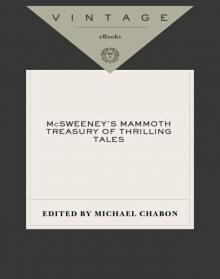 McSweeney's Mammoth Treasury of Thrilling Tales
McSweeney's Mammoth Treasury of Thrilling Tales The Amazing Adventures of Kavalier & Clay
The Amazing Adventures of Kavalier & Clay The Yiddish Policemen's Union
The Yiddish Policemen's Union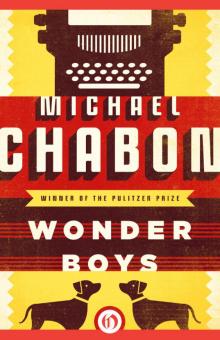 Wonder Boys
Wonder Boys Manhood for Amateurs
Manhood for Amateurs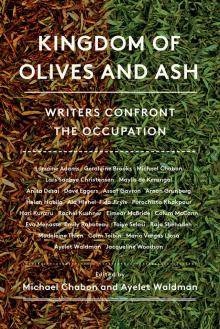 Kingdom of Olives and Ash: Writers Confront the Occupation
Kingdom of Olives and Ash: Writers Confront the Occupation Gentlemen of the Road: A Tale of Adventure
Gentlemen of the Road: A Tale of Adventure A Model World and Other Stories
A Model World and Other Stories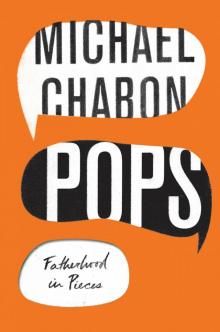 Pops: Fatherhood in Pieces
Pops: Fatherhood in Pieces McSweeney's Enchanted Chamber of Astonishing Stories
McSweeney's Enchanted Chamber of Astonishing Stories Summerland
Summerland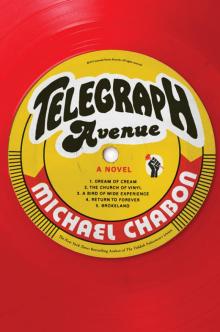 Telegraph Avenue
Telegraph Avenue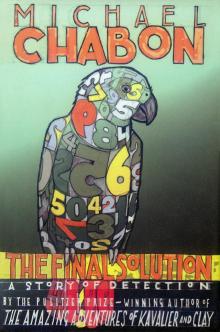 The Final Solution
The Final Solution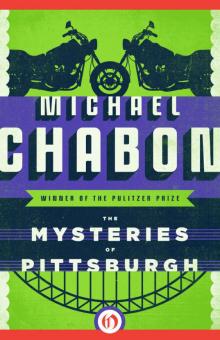 The Mysteries of Pittsburgh
The Mysteries of Pittsburgh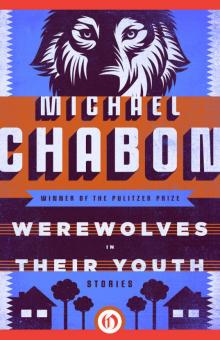 Werewolves in Their Youth
Werewolves in Their Youth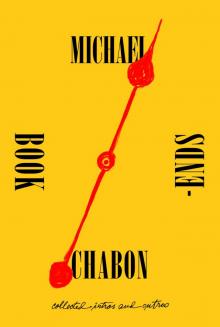 Bookends
Bookends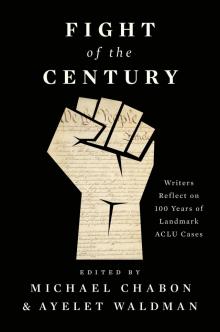 Fight of the Century
Fight of the Century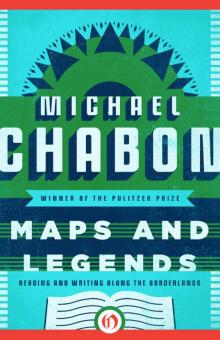 Maps and Legends
Maps and Legends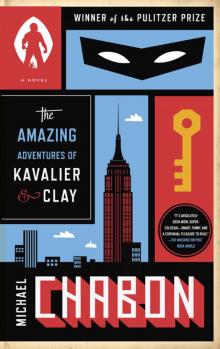 The Amazing Adventures of Kavalier & Clay (with bonus content)
The Amazing Adventures of Kavalier & Clay (with bonus content)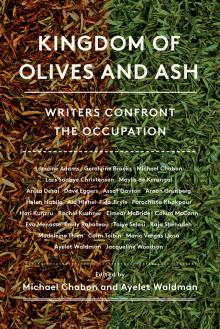 Kingdom of Olives and Ash
Kingdom of Olives and Ash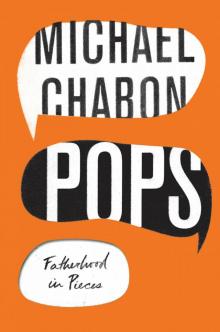 Pops
Pops Gentlemen of the Road
Gentlemen of the Road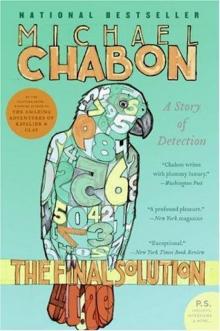 The Final Solution: A Story of Detection
The Final Solution: A Story of Detection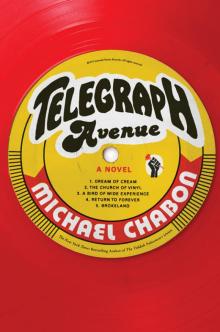 Telegraph Avenue: A Novel
Telegraph Avenue: A Novel